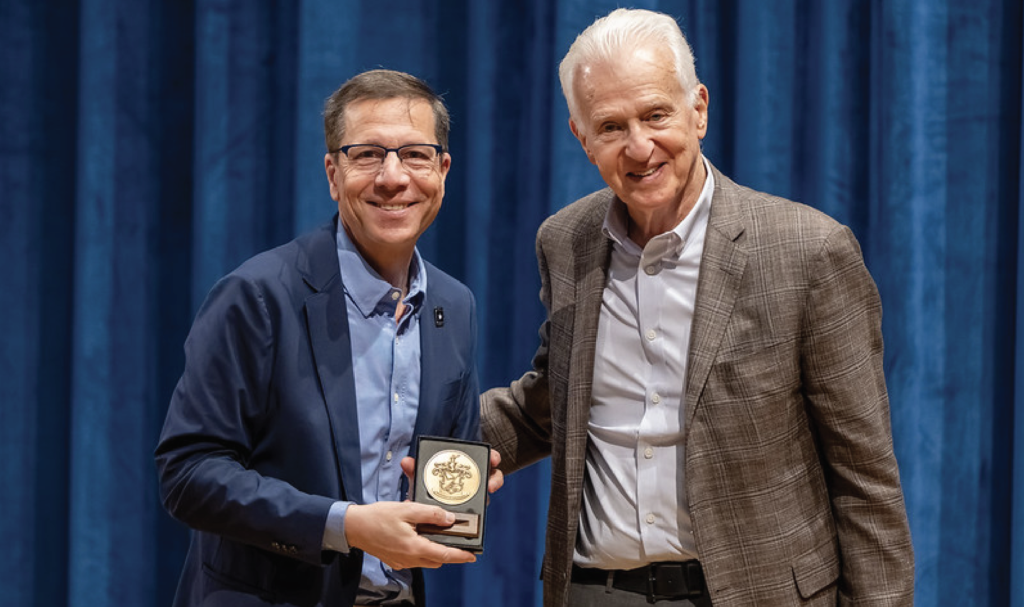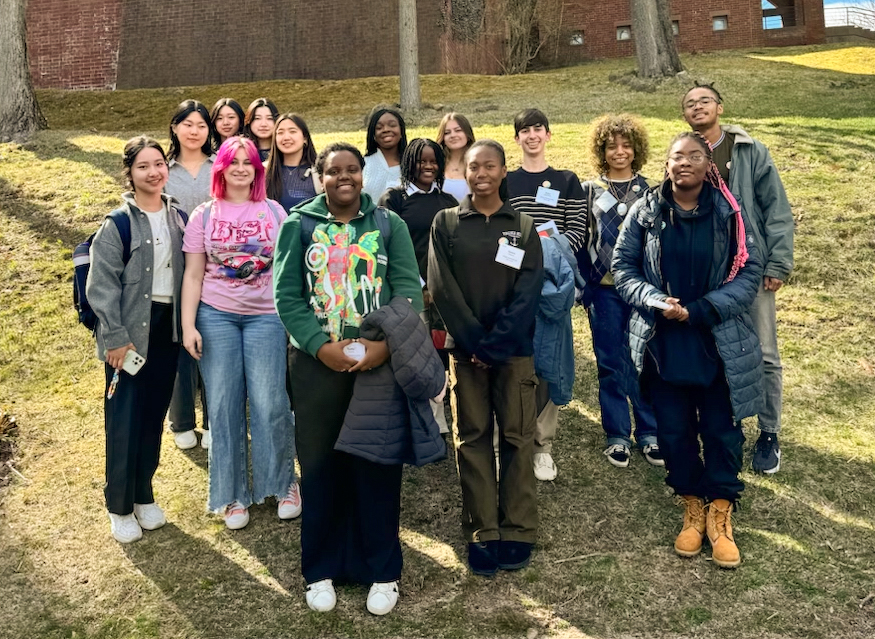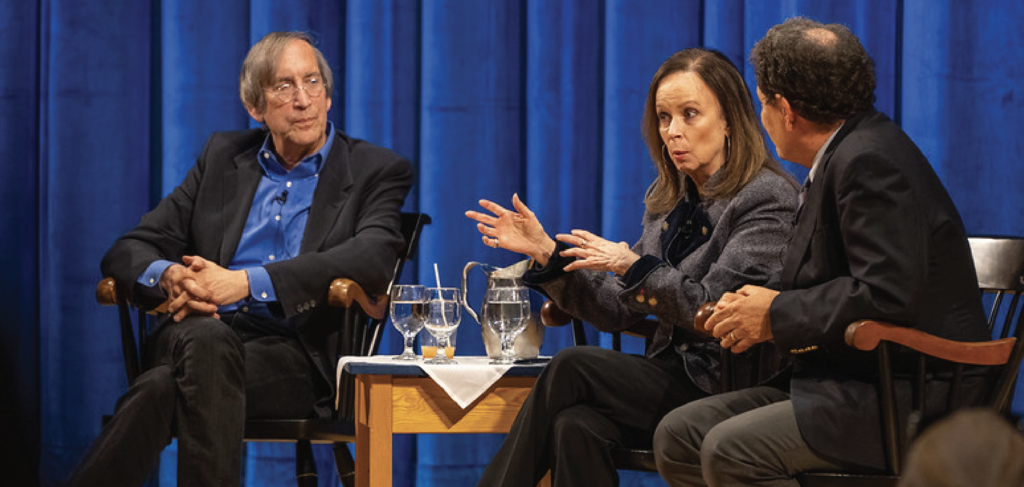By Kaylin Lam ’27
On January 26, students enrolled in the Chinese 400 and 450 classes embarked on a field trip filled with opportunity for cultural immersion and emerged with a newfound understanding of Chinese-American history.
Departing at around 8:15 a.m., the group drove for three hours to the Museum of Chinese in America (MOCA) in New York City, which educates people on the history, experiences, and culture of Chinese Americans and immigrants. This was the first time since the beginning of the Covid-19 pandemic that the field trip took place, although it had been a staple of the course in years prior. The itinerary consisted of visiting MOCA, exploring Chinatown, eating authentic Chinese food, and, of course, drinking boba tea.
Chinese teacher Ms. Dan Zhao, who coordinated the event, said she chose MOCA after considering how it aligned with the Chinese 400 curriculum. “We have a curriculum with a chapter that focuses on important Chinese and overseas Chinese [individuals], which includes Chinese Americans too,” she said. “We studied the stories of people like Jeremy Yang, the founder of Yahoo, Jeremy Lin, who is a famous basketball player, and many others like I.M. Pei, the famous architect.” Visiting the museum allowed students to further explore this topic and the figures they had previously learned about.
Students shared how the field trip added depth to their study of the language and Chinese culture. Elsa Franks ’24 believes that seeing all the exhibits reinforced everything she learned in the classroom: “[The trip] was impactful for the learning of Chinese culture because some things that we hadn’t yet touched on in class were heavily covered in the museum, such as Chinese American activism in the Civil Rights Movement of the ’60s.”
Aubrie Williams ’24 found connections between the museum visit and her U.S. History class, in which she studied the Chinese Exclusion Act and other events involving Chinese Americans. “I thought the museum would give a more human perspective on it, so I was looking forward to seeing the primary sources and pictures,” she said.
Another key aspect of the field trip was language immersion. The group went to a restaurant that served seafood, pork bones, and other authentic dishes. Students read the menu written in Chinese and spoke to the servers in the language as well. “Being in the restaurant and having to figure out how to order made us all think on our feet and try to use the skills that had been taught,” Franks said. “It was a completely unique experience.”
To add to what they had experienced on the trip, Ms. Zhao created a follow-up assignment for her students to reflect on their museum visit in the form of a virtual Padlet. The assignment would include first-hand photos, explanations, and recordings about a specific takeaway from the trip. “It could be an object, a dish, something we bought on the street, or even a piece of art,” Williams explained. “I’m looking forward to reflecting on that and making connections.”
The planning of the trip was conducted by Ms. Zhao and Language Department Head Mr. Charlie Fuentes, who received positive feedback from student participants. “I think it was overall smooth. They made sure that we had a good time, but the bus rides were a little long,” Franks said.
Williams wished she had more time to engage with others on the trip. “I would love to be able to spend even more time talking to people in the museum and in restaurants, but I think my teacher and the organizers of the trip did a really good job,” she said. “It’s a good sign that my only improvement is that I would have liked to do more.”
Reflecting on the trip, Ms. Zhao encouraged her students to continue thinking about the history of Chinese Americans, immigration, and Chinatown. “I want them to see and to experience personally … that what we learn in the classroom from the textbook is real, and has played a heavy role in our history,” she said.




